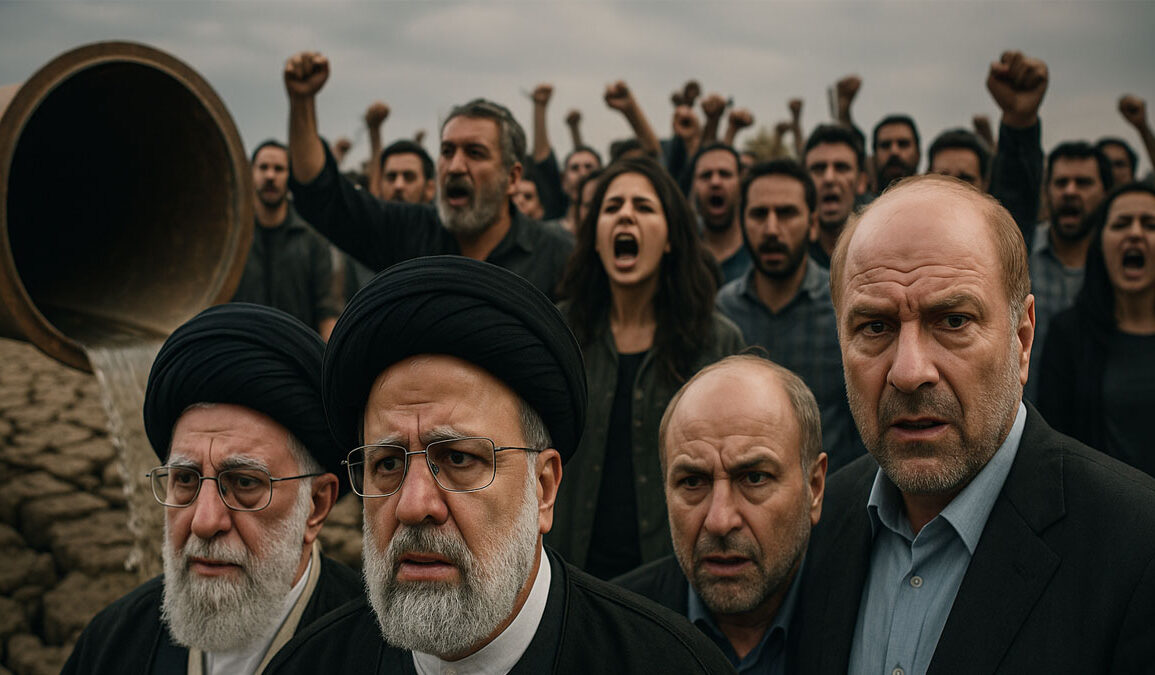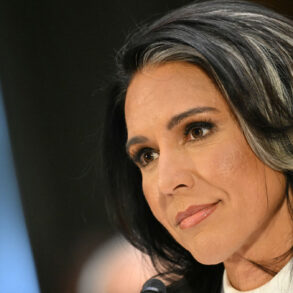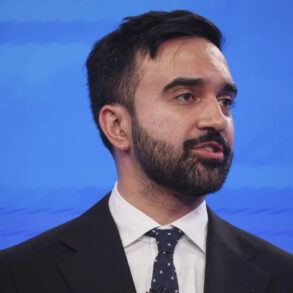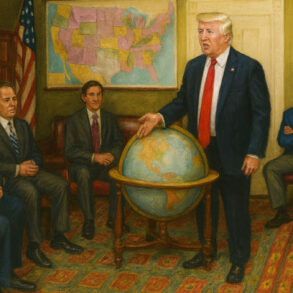Iran is entering what experts call water bankruptcy, a permanent state where national demand exceeds renewable supply. Kaveh Madani of the United Nations University Institute for Water, Environment and Health warns that the crisis is already eroding the state’s capacity. “This water bankruptcy weakens Iran on the world stage,” he told Fox News Digital. He added that if leaders “want to stick to their ideology and fight with the West, they must use their natural resources and burn them, so if there is no water, there is less resilience and less capacity to resist.” President Masoud Pezeshkian has delivered an extraordinary public warning. Without rainfall before winter, he said, Tehran could face partial evacuation. Officials report that of the five main dams supplying the capital, one is already dry and another is operating below eight percent.
Energy Minister Abbas Ali-Abadi has announced evening shutoffs to refill reservoirs and urged citizens to cut consumption by twenty percent to avoid rationing. The U.S. State Department, in a Farsi statement, put it bluntly. “Iran is collapsing under the weight of the regime’s corruption and mismanagement,” it said, citing water rationing and the prospect of evacuation for millions in Tehran.
Why the Water Ran Out
The roots of the crisis are political, not natural. Analysts describe a system that chased megaprojects, legalized tens of thousands of illegal wells, and treated aquifers as bottomless. Agriculture consumes over ninety percent of national water, yet much of it is lost before it reaches crops. A network that critics call a water mafia grew around dam contracts, inter-basin transfers, and diversion tunnels. The report on Iran’s trajectory toward state failure points to the Islamic Revolutionary Guard Corps and its construction arm, Khatam al-Anbiya, as central players in this patronage economy. Projects moved forward with minimal oversight and little respect for hydrology. The story of the Gotvand Dam is the clearest symbol. Built atop a salt formation despite warnings, it turned into a brine factory that increased salinity downstream, poisoned farmland, and destroyed date palms.
This pattern abandoned a national legacy of stewardship. For nearly three thousand years, Persians built and maintained qanats, underground aqueducts that made permanent settlement possible in an arid land. Many of those qanats are now destroyed or dry because deep wells have lowered water tables below their channels. As one analysis concludes, the country is now withdrawing more than one hundred percent of its renewable water every year. That means Iran is not only spending its inheritance, it is also breaking the vault that once stored it.
Three failures explain how scarcity turns into collapse. First, relentless pumping compacts aquifers and causes land subsidence over vast areas. In some plains the ground sinks more than thirty centimeters a year. Compacted aquifers cannot be refilled to their former capacity, so even wet years will not restore storage. Second, falling reservoir levels cripple hydropower, which leads to blackouts that then shut down pumps and wastewater plants. “Lack of rain means less hydropower generation, leading to both water and power outages,” Madani said. Third, aging urban networks leak away up to thirty percent of treated water. These mechanisms feed one another and push cities toward Day Zero. State media has warned that Tehran could reach the point where the network cannot deliver piped water within weeks during peak heat.
What Iran Could Do, and Why It Probably Will Not
There is a workable technical playbook. Experts call for a unified national water authority that is insulated from short-term politics, realistic pricing with lifeline protections, legal extraction caps by basin, modern metering, wastewater reuse at scale, and a nationwide shift to efficient irrigation and smarter crops. A full blueprint proposes an International Water Recovery Consortium. In this plan, Israel would lead technology deployment and governance reform, Australia would build basin accounting and legal caps, Singapore would design urban resilience and tariff structures, the Netherlands would develop local stakeholder water boards, and Saudi Arabia with GCC partners would anchor financing for desalination, reuse, and solar-powered conveyance.
The obstacle is the regime’s political economy. The same institutions that benefit from crisis construction would have to surrender power and profits. The report’s verdict is direct. The current system is structurally incapable of the reforms that survival requires. President Pezeshkian’s talk of relocating the capital directs scarce resources toward the largest possible construction project while the taps are running dry. It is not a fix, it is an admission that the state cannot secure water for its core.
Unrest at the Tap
Water stress has already triggered street protests. Chanting “Water, electricity, life,” citizens in multiple cities demanded basic services in 2025. This follows the “Uprising of the Thirsty” in Khuzestan in 2021, when security forces used live fire. Madani connected infrastructure failure to security risks. “When people are out of water and electricity, you face domestic and national security problems that even Iran’s enemies, not even President Trump or Prime Minister Netanyahu, could have wished for this to happen.”
Analysts project grim human costs if systems continue to fail, including excess deaths from heat, malnutrition, and waterborne disease, plus internal displacement on a massive scale. The report’s medium-case forecast for the next decade includes 1.35 million excess deaths and up to 18 million internal water refugees, with a potential 3.5 million crossing borders, a combination that would shake the region.
How Scarcity Weakens the Security State
A state loses legitimacy when it cannot provide water and power to its capital. Pezeshkian’s warning about evacuating parts of Tehran, and talk of moving the capital, tell citizens that the center can no longer guarantee essentials. Hydropower shortfalls feed blackouts. Blackouts shut down pumps. Pumps failing turn outages into public health emergencies. A security force can disperse a crowd, it cannot force water into empty pipes. If orders to fire on thirsty families fracture loyalty within the ranks, the political center could crack along ethnic and basin lines. The report now ranks collapse and fragmentation as the most likely scenario, with a long muddle-through assigned low to medium probability, and voluntary reform given almost no chance.
Actions by the United States and Israel have contributed to pressure on the regime, even as earlier development ties unintentionally fed risky practices. During the Shah’s modernization, American programs sent engineers and drilling technology that, when replicated at scale without governance, accelerated groundwater depletion. After 1979, sanctions helped push the leadership toward a resistance economy that prized water-hungry self-sufficiency and megaprojects over conservation. In the security arena, Israeli Prime Minister Benjamin Netanyahu praised President Trump’s “bold” decision to strike nuclear sites. Although U.S. claims said airstrikes destroyed facilities, new reporting pointed to continued enrichment at a fortified site known as Pickaxe Mountain. Madani’s point is simple. If water and electricity shortages persist, “any nuclear program would also be impacted.” In practice, environmental weakness magnifies the effects of diplomatic and military pressure.
The U.S. State Department is tying the crisis to regime choices. “Instead of responding to these urgent needs, the regime has this year smuggled 1 billion in hard currency to its terrorist proxy group Hezbollah,” its statement said. “The Iranian people deserve leaders who care about their health, prosperity, and future.” That framing underscores a broader view. Iran has been a bad actor, funding proxy warfare while its aquifers fall. Pressure from the United States and Israel has exposed how hollow the regime’s promises are when the taps run dry.
Madani said “the house was already on fire,” and now “the flames are undeniable.” He urged leaders and citizens to recognize that “we are discussing Day Zero.” Iranian American analyst Nik Kowsar calls the situation a warning to every society that treats water as infinite. He traces the unraveling to a fascination with concrete, the rise of a water mafia, and the destruction of qanats. President Pezeshkian has tried to buy answers, offering a reward to anyone who can solve the crisis, yet his own statements on evacuation and relocation admit that the system cannot meet demand. Critics at home and abroad say the government still chases temporary relief and political optics while the reservoirs fall.
Hard Choices and a Narrow Exit
Two paths remain. One is isolation, blackouts, agricultural ruin, and displacement, a course that leads to state failure. The other is national revival through transparency and partnership after a political transition. The recovery plan recommends immediate contingency work by a “Shadow” task force made up of the United States, the European Union, the G7, and technical partners, so that emergency purification, mobile sanitation, and refugee logistics are ready for rapid deployment. That preparation matters because the window for change will be short and chaotic.
There is a final truth that cuts through the ideology. Water is not negotiable. As Madani said, no water means less resilience and less capacity to resist. Iran’s rulers have spent down a three thousand year legacy of stewardship for short-term power and profit. The taps are now writing the future, and if they run dry in the capital, the regime’s time may run out with them.








